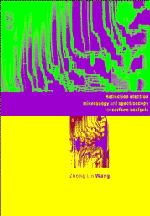Book contents
- Frontmatter
- Contents
- Preface
- Symbols and definitions
- 0 Introduction
- 1 Kinematical electron diffraction
- Part A Diffraction of reflected electrons
- 2 Reflection high-energy electron diffraction
- 3 Dynamical theories of RHEED
- 4 Resonance reflections in RHEED
- Part B Imaging of reflected electrons
- Part C Inelastic scattering and spectrometry of reflected electrons
- Appendix A Physical constants, electron wavelengths and wave numbers
- Appendix B The crystal inner potential and electron scattering factor
- Appendix C.1 Crystallographic structure systems
- Appendix C.2 A FORTRAN program for calculating crystallographic data
- Appendix D Electron diffraction patterns of several types of crystal structures
- Appendix E.1 A FORTRAN program for single-loss spectra of a thin crystal slab in TEM
- Appendix E.2 A FORTRAN program for single-loss REELS spectra in RHEED
- Appendix E.3 A FORTRAN program for single-loss spectra of parallel-to-surface incident beams
- Appendix E.4 A FORTRAN program for single-loss spectra of interface excitation in TEM
- Appendix F A bibliography of REM, SREM and REELS
- References
- Materials index
- Subject index
3 - Dynamical theories of RHEED
Published online by Cambridge University Press: 18 January 2010
- Frontmatter
- Contents
- Preface
- Symbols and definitions
- 0 Introduction
- 1 Kinematical electron diffraction
- Part A Diffraction of reflected electrons
- 2 Reflection high-energy electron diffraction
- 3 Dynamical theories of RHEED
- 4 Resonance reflections in RHEED
- Part B Imaging of reflected electrons
- Part C Inelastic scattering and spectrometry of reflected electrons
- Appendix A Physical constants, electron wavelengths and wave numbers
- Appendix B The crystal inner potential and electron scattering factor
- Appendix C.1 Crystallographic structure systems
- Appendix C.2 A FORTRAN program for calculating crystallographic data
- Appendix D Electron diffraction patterns of several types of crystal structures
- Appendix E.1 A FORTRAN program for single-loss spectra of a thin crystal slab in TEM
- Appendix E.2 A FORTRAN program for single-loss REELS spectra in RHEED
- Appendix E.3 A FORTRAN program for single-loss spectra of parallel-to-surface incident beams
- Appendix E.4 A FORTRAN program for single-loss spectra of interface excitation in TEM
- Appendix F A bibliography of REM, SREM and REELS
- References
- Materials index
- Subject index
Summary
Reflection high-energy electron diffraction is a Bragg case, in which the beams to be detected are those reflected from the bulk crystal surface. Owing to the strong interaction between the incident electron and the crystal atoms, multiple (or dynamical) scattering is very strong. Although the positions of RHEED beams can generally be predicted by kinematical scattering theory, quantitative analysis of RHEED patterns relies on dynamical calculations. In this chapter, we will first illustrate the quantum mechanical approach for electron diffraction. Then we will outline a few commonly used dynamical theories accompanied by some calculated results.
Based on the first-principles approach, we will consider the fundamental equation that governs the scattering of high-energy electrons in crystals. Before we show the mathematical description, it is important to consider the nature of the events that we are studying. The average distance between successive electrons that strike the crystal in a transmission electron microscope is about 0.2 mm (for 100 keV electrons) if the electron flux is on the order of 1012 s−1 This distance is much larger than the thickness (typically less than 0.5 μm) of the specimen, thus the interaction between any successive incident electrons is extremely weak. Therefore, the interaction between the incident beam and the crystal can be treated one electron at a time. In other words, electron diffraction theory is basically a single-electron scattering theory.
Strictly speaking, scattering of high-energy electrons obeys the Dirac equation. The Dirac equation contains not only the relativistic effects but also electron spin.
Information
- Type
- Chapter
- Information
- Publisher: Cambridge University PressPrint publication year: 1996
